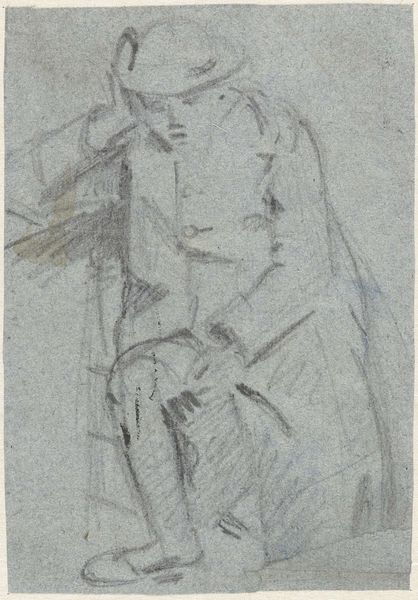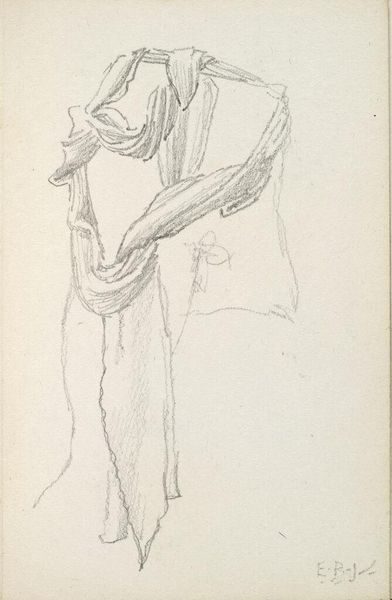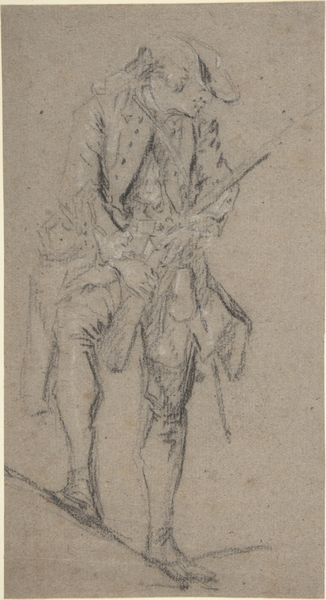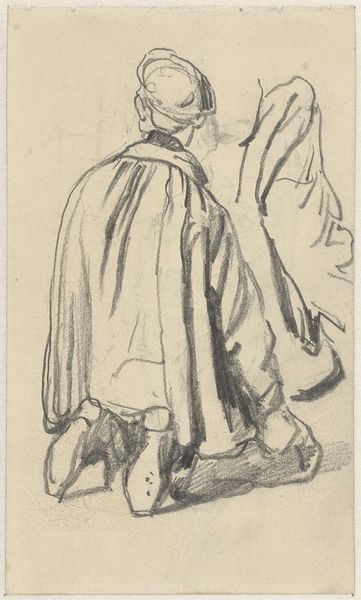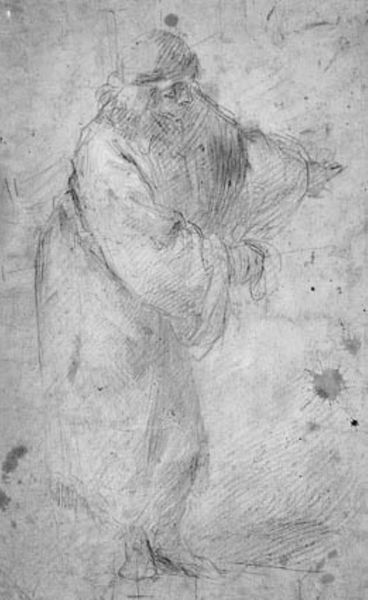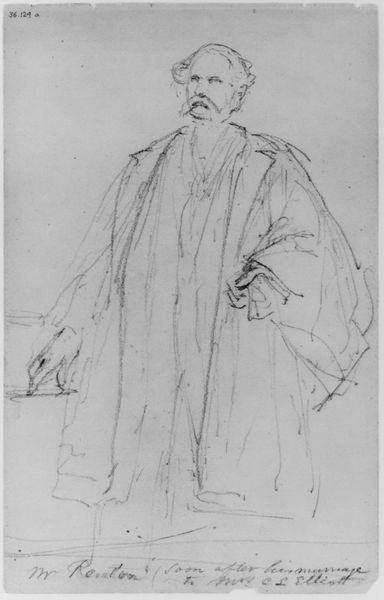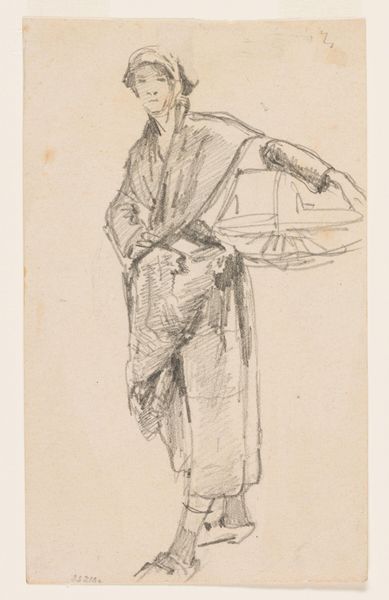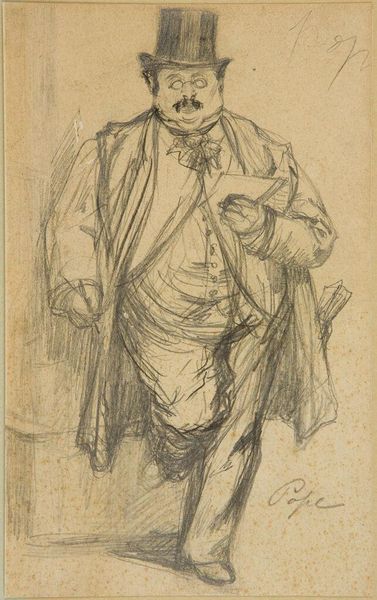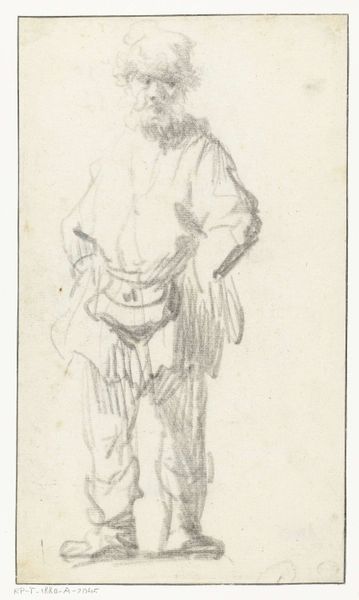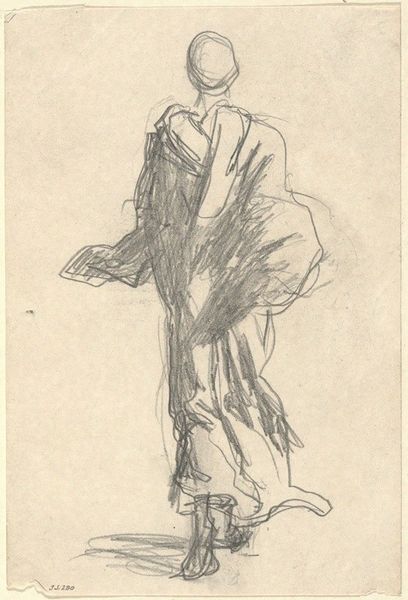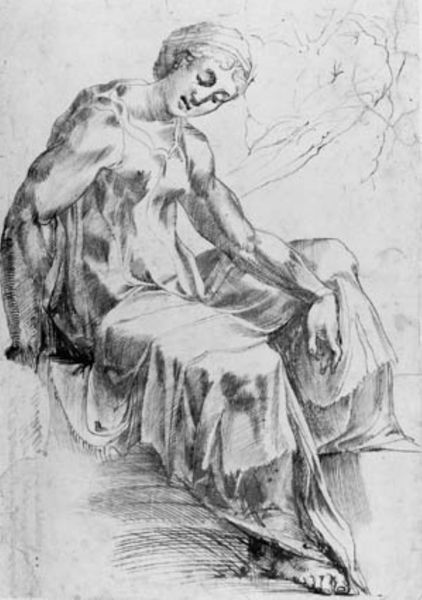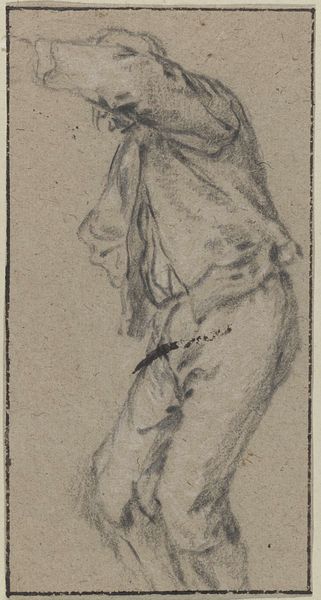
drawing, pencil
#
portrait
#
drawing
#
pencil sketch
#
figuration
#
sketch
#
pencil
#
academic-art
#
realism
Copyright: Public domain
Editor: This is "Studies for William Rush" by Thomas Eakins, drawn in 1876. It's a pencil sketch of a figure. It looks very gestural and preliminary. I'm curious about it, what strikes you about this work? Curator: Immediately, I'm drawn to the process evident in the sketch itself. The very act of drawing, the application of graphite to paper, becomes the subject. Notice the visible "life size" note; this reveals Eakins’ emphasis on the actual, physical labor and material preparation involved in creating sculpture. How do the provisional lines here relate to the supposed finished piece and the status ascribed to sculpture over drawing? Editor: That's a good point. It makes you consider the role of drawing and the means to his end product. Is the "life size" note implying something about value here too, almost mimicking the final version? Curator: Exactly. By highlighting the scale and preparatory nature, Eakins elevates what might be considered a disposable step into something worthy of consideration in its own right. He's reminding us that artistic value isn’t solely tied to the final, polished product, but to the labour, skill, and intention embedded in the means of production too. What is lost in the process of translation between this intimate study and finished sculpture? Editor: It's interesting to think about how we often overlook the preliminary stages. Thank you for pointing out these subtleties; it’s made me appreciate the work differently. Curator: My pleasure! Considering materiality and processes really enriches our engagement with the artwork. It encourages a dialogue between different stages of artistic work and between various art forms too.
Comments
No comments
Be the first to comment and join the conversation on the ultimate creative platform.
